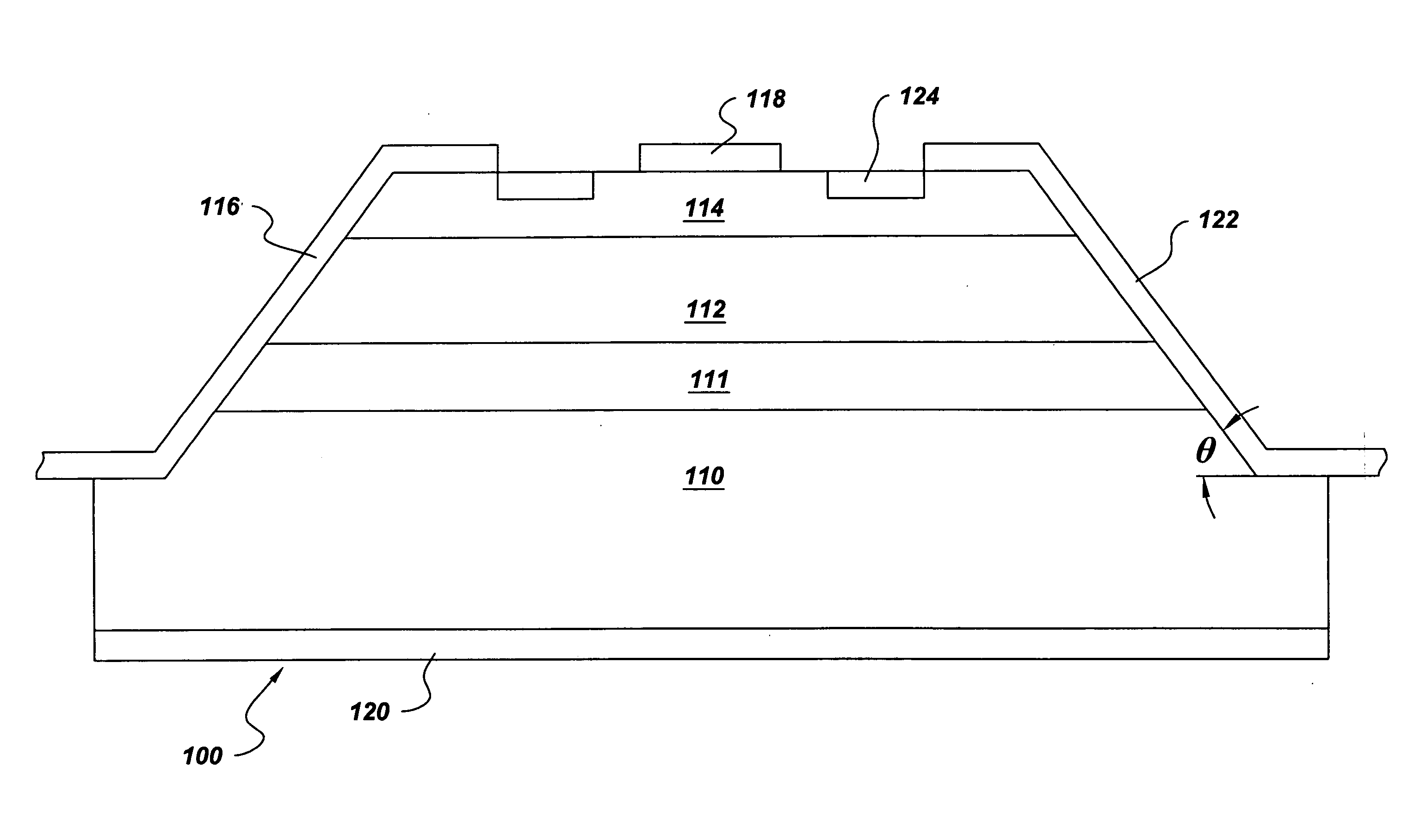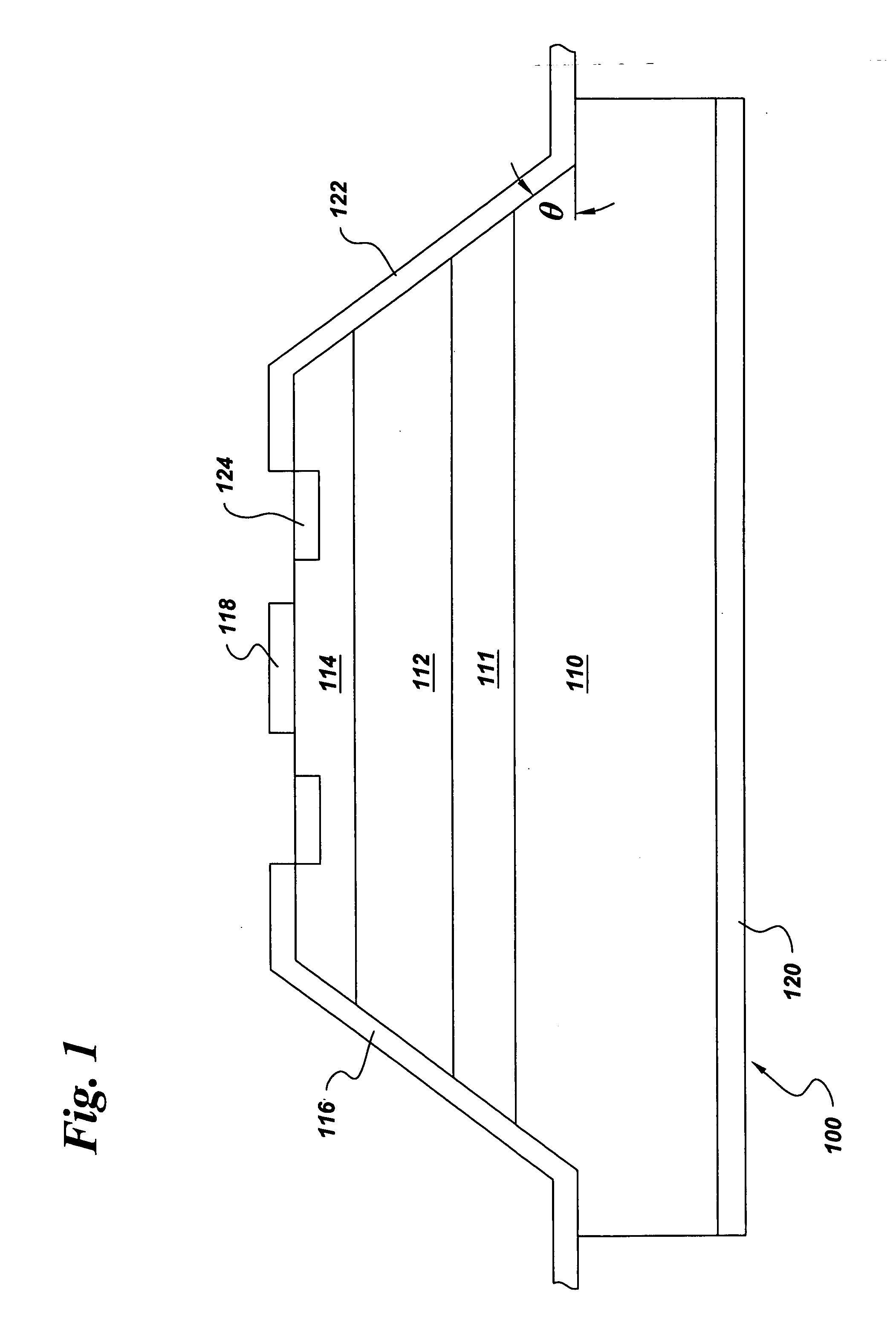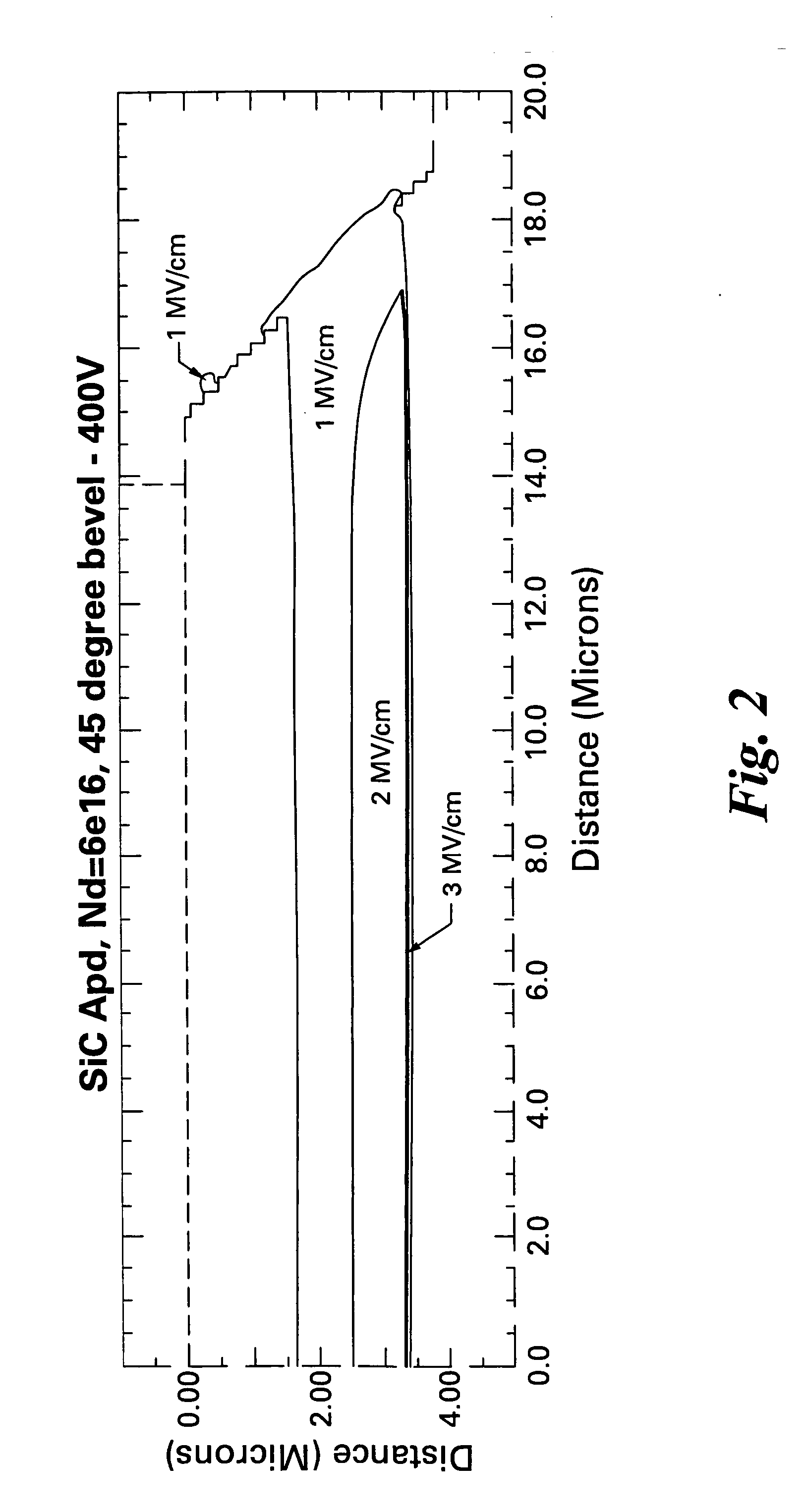Detection system including avalanche photodiode for use in harsh environments
a technology of avalanche photodiodes and detection systems, which is applied in the direction of optical radiation measurement, radiation control devices, instruments, etc., can solve the problems of increasing the cost of use of pmts, prone to failure, and fragile pmts, etc., and driving up the cost of us
- Summary
- Abstract
- Description
- Claims
- Application Information
AI Technical Summary
Benefits of technology
Problems solved by technology
Method used
Image
Examples
Embodiment Construction
[0022] An aspect of the present invention is directed to an avalanche photodiode (APD) device for use in oil well drilling applications in harsh, down-hole environments where shock levels are near 250 gravitational acceleration (G) and / or temperatures approach or exceed 150° C. Another aspect of the present invention is directed to an APD device fabricated using SiC materials. Another aspect of the present invention is directed to an APD device fabricated using GaN materials. An avalanche photodiode is a photodiode that operates with a reverse bias voltage that causes a primary photocurrent to undergo amplification by cumulative multiplication of charge carriers. As the reverse-bias voltage increases toward a breakdown, hole-electron pairs are created by absorbed photons. An avalanche effect occurs when the hole-electron pairs acquire sufficient energy to create additional pairs of holes and electrons, thereby achieving a signal gain.
[0023] Epitaxial layers of specific qualities (e...
PUM
 Login to View More
Login to View More Abstract
Description
Claims
Application Information
 Login to View More
Login to View More - R&D
- Intellectual Property
- Life Sciences
- Materials
- Tech Scout
- Unparalleled Data Quality
- Higher Quality Content
- 60% Fewer Hallucinations
Browse by: Latest US Patents, China's latest patents, Technical Efficacy Thesaurus, Application Domain, Technology Topic, Popular Technical Reports.
© 2025 PatSnap. All rights reserved.Legal|Privacy policy|Modern Slavery Act Transparency Statement|Sitemap|About US| Contact US: help@patsnap.com



